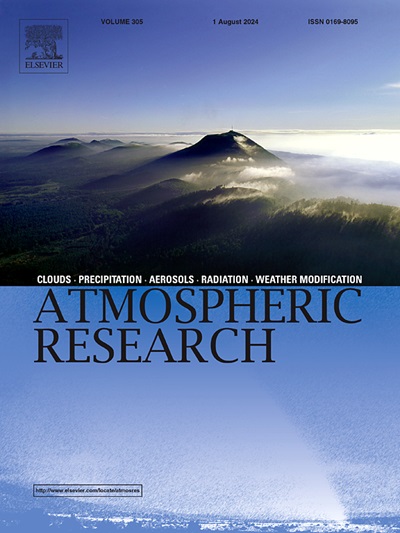Rising temperature increases the response time of LAI and GPP to meteorological drought in China
IF 4.5
2区 地球科学
Q1 METEOROLOGY & ATMOSPHERIC SCIENCES
引用次数: 0
Abstract
The response of vegetation to drought is a crucial aspect of understanding ecosystem adaptation to climate change. Response time (RT) to drought serves as a key metric to quantify vegetation anomalies induced by drought events. However, it remains unclear from the perspective of event. Therefore, we quantified the RT of Leaf Area Index (LAI) and Gross Primary Productivity (GPP) to meteorological drought across various vegetation types and climatic zones in China. Additionally, we analyzed the spatial distribution of vegetation loss during response periods and the factors influencing RT. Our findings indicated that the primary RT of LAI and GPP to Standardized Precipitation Evapotranspiration Index (SPEI) was short-term (<4 months), with LAI's longer RT concentrated in southern China. In contrast, the spatial distribution of GPP's RT largely opposed that of LAI. Grasslands exhibited notably different RT spatial distributions compared to other vegetation types. Additionally, we found LAI experiencing greater losses than GPP during response periods. For RT of both LAI and GPP, near-surface temperature (TEM) emerged as the paramount influencing factor, with RT significantly increasing with rising TEM. Secondary factors included surface solar radiation (SSRD) and Vapor Pressure Deficit (VPD), but LAI and GPP showed distinct differences in their biased dependence on SSRD and VPD respectively. Most regions displayed a significant positive correlation between RT of LAI and GPP with TEM, and a negative correlation with SSRD. The study clarifies the spatiotemporal patterns of vegetation response to drought and provides a scientific basis for water resource allocation and future drought prevention and mitigation to reduce drought's negative impact on terrestrial ecosystems.

温度升高延长了中国 LAI 和 GPP 对气象干旱的响应时间
本文章由计算机程序翻译,如有差异,请以英文原文为准。
求助全文
约1分钟内获得全文
求助全文
来源期刊

Atmospheric Research
地学-气象与大气科学
CiteScore
9.40
自引率
10.90%
发文量
460
审稿时长
47 days
期刊介绍:
The journal publishes scientific papers (research papers, review articles, letters and notes) dealing with the part of the atmosphere where meteorological events occur. Attention is given to all processes extending from the earth surface to the tropopause, but special emphasis continues to be devoted to the physics of clouds, mesoscale meteorology and air pollution, i.e. atmospheric aerosols; microphysical processes; cloud dynamics and thermodynamics; numerical simulation, climatology, climate change and weather modification.
 求助内容:
求助内容: 应助结果提醒方式:
应助结果提醒方式:


